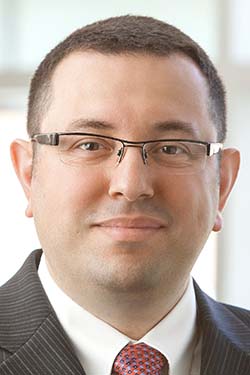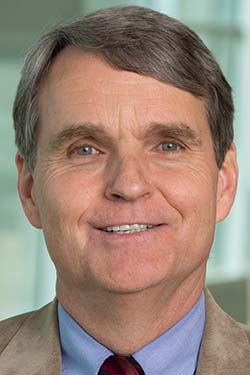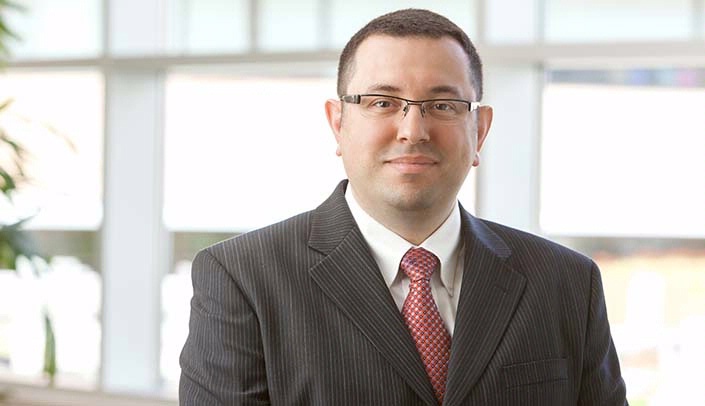In August, the UNMC College of Medicine will launch Training the Physicians of Tomorrow (TPT), a new active learning-based curriculum that emphasizes hands-on learning techniques, small-group interaction, technology and research and inquiry.
 |  |
Samer Sayyed, M.D. | George Rozanski, Ph.D. |
Along the way, approximately 100 faculty members participated in redesigning the new curriculum. Here’s what circulatory block co-leaders Samer Sayyed, M.D., cardiology, and George Rozanski, Ph.D., physiology, learned along the way, in their own words:
Dr. Rozanski:
One of the more challenging aspects of the TPT curriculum has been the integration of diverse-learning tools into a cohesive systems block that will encourage inquiry and critical thinking by our students.
In the past, the large lecture component of our medical curriculum had, unfortunately, nurtured a passive learning environment for students. By contrast, the new curriculum will encourage students to take a more active role in their education… and improve student retention of what they learn.
Integration across disciplines is essential to the successful development and implementation of the TPT curriculum. The circulatory block blends basic science (anatomy, physiology, biochemistry, pharmacology) with clinical (cardiology, pathology, immunology, population health) disciplines into a comprehensive learning environment that will prepare our students for the practice of medicine in the 21st-century.
Dr. Sayyed:
The biggest challenge, which also can be viewed as a great opportunity, was having to create a new curriculum that will probably resemble nothing of the old one it is replacing. . .
The new curriculum will be more engaging and meaningful to students than ever before. It also will be more cohesive and tightly knit together than the current curriculum. We are thinking and rethinking each and every decision and trying to view everything we do from multiple angles, especially (from the students’ perspective).
Working with colleagues across disciplines has helped tremendously because everybody brought their unique experience and perspectives. Nothing was taken for granted and every step was considered carefully from multiple angles. No one person could have done that all by himself or herself.

Thanks for all of your hard work!!!